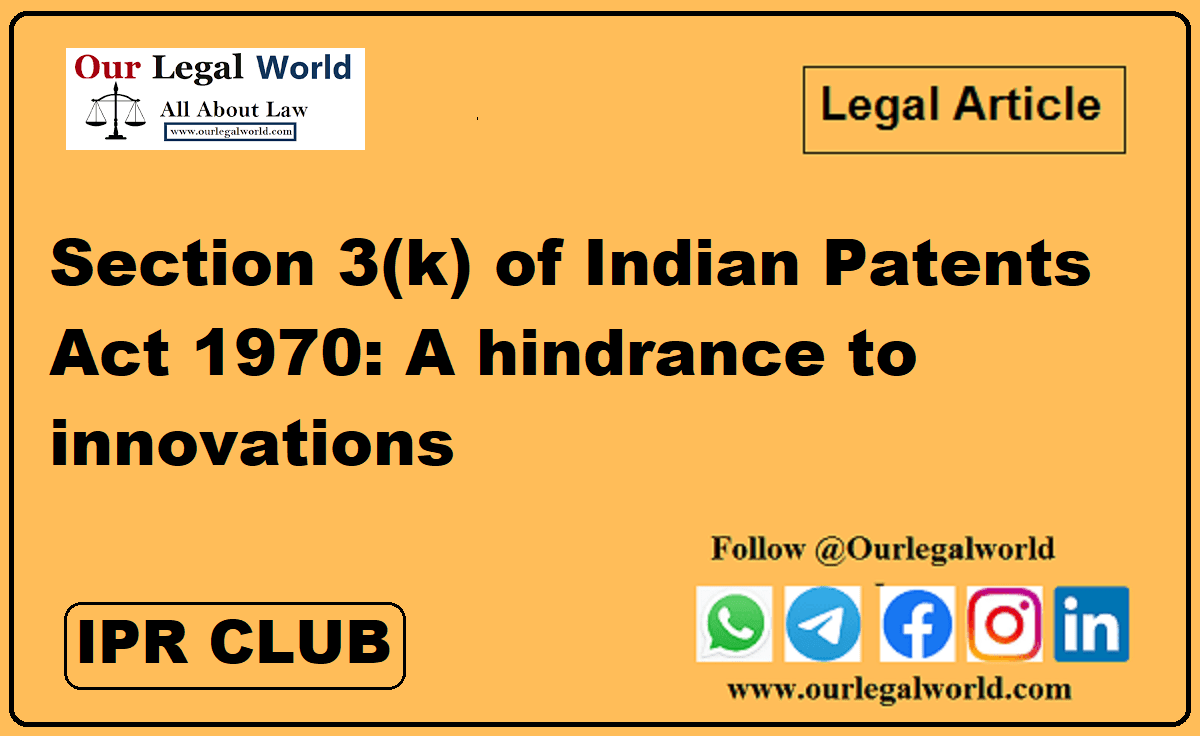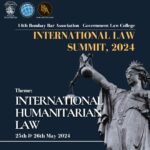Section 3(k) of Indian Patents Act 1970: A hindrance to innovations
Written by Manik [NLU, Jodhpur]
Introduction
Section 3 of the Patents Act, 1970 (hereinafter referred to as the Act) is an exclusion clause and states that a mathematical, a business method or a computer programme are not patentable as mentioned in section 3 (k) thus they come within the domain of ‘what are not inventions’. But recently the Delhi High Court in Open TV Inc v The Controller of Patents and Designs and Anr stated that there is a need to reexamine the exclusions in section 3 (k) of the act so as to ensure that the patent law is not outpaced by the march of the technology in the digital space and patenting as the process does not come irrelevant in the upcoming years.
The Issues present in Section 3(k)
The issue present in this section 3 (k) of the act was highlighted in the case of Ferid Allani v. Union of India wherein it was mentioned that not all inventions based on computer programmed can be the bar by this section considering the today’s digital world. Further, if we see innovations in the field of AI, and blockchain technologies which are based on computer programmers, therefore, they cannot become non-patentable simply for that reason and if a step in such a direction is taken then it would be a retrograde one.
Also Read: Examining the Limits of Performer Rights of Sportspersons: The Copyright Act, 1957
Also in the Parliamentary Committee Report titled ‘Review of the Intellectual Property Rights Regime in India’ the loopholes of this section were identified wherein it was found that the section 3 (k) does not provide patent protection to the business method or computer programme or algorithms run by the AI and if protection is extended to the works created by the AI either autonomously or with the assistance of human being then it would incentivize the creator and encourage the development of more AI solutions.
No clarity with respect to the technical effect
In Ferid Allani v. Union of India while dealing with the exclusion of the computer programmes under section 3 (k) of the act the court stated that computer programmes if they are producing technical effects then they will qualify to be patented under this act but in this case, they did not define the term ‘technical effect’. Similarly in the other case of Ericsson v. Intex where it was stated that a procedure or a method or an algorithm in an apparatus which brings technical effect cannot come under section 3 (k) but they once again did not define the term ‘technical effect’. Even under the 2013 Guidelines for the Examination of Computer Related Examination the term technical effect was demonstrated by examples of improved user interface, higher speed and reduced hard-disk access time etc. But no particular definition was given on this term to give clarity on this aspect.
At the same time even under the 2017 CRI Guidelines, there is no clarity with respect to ‘technical effect’ with a lack of clarity concerning this term it provides ample room for interpretation. The 2017 guidelines simply reiterate the position of the law laid down in Yahoo Inc v. Assistant Controller of Patents and states that “technical advance comparison should be done with the subject matter of invention and it should be found it is not related to any of the excluded subjects” but no clarity is present as to what is the meaning of the term ‘technical advance’.
Even after the formulation of the guidelines we see that examiners and controllers continue to reject the software-based invention and not take into account these guidelines.
Need for Amendment
AI inventions which has changed the world drastically and it is the necessity of the time to protect the human intellect and development. Efforts should be made to rectify this section and protect these inventions because if the same is not done then the patenting as a process will be outpaced. Further AI usage has increased manifold during the time of Covid-19 and is playing a crucial role in responding to the crisis at the same time its crucial contribution to the Indian Economy necessitates its expansion to take place in a secure manner therefore section 3 (k) of the act needs to be amended.
With respect to the amendment of section 3 (k) of the act, the practice of the EU and US can be taken into consideration where the linking of mathematical methods or algorithms to a tangible technical device or practical application of it would lead to the protection of patent being granted to them and this conversion of algorithm and mathematical method would at the same time make it easier to grant them the protection of the patent.
Conclusion
Considering the issues present in section 3 (k) of the Indian Patents Act there needs to be an amendment in the section as suggested by the Parliamentary Standing Report the amendment would not only guide the courts but would also help India to foster technological revolution as adequate protection would now be provided to them and be fruitful for the development of the intellectual property law in India. At the same time, it is now the responsibility of the legislature or the courts to take a stance since as the courts have observed in the F Hoffman la Roche v Cipla Ltd that for ascertaining the true sense of the term the foreign judgments cannot be relied upon. Therefore need is there to clarify this term as soon as possible.




![Call for Campus Ambassadors by Our Legal World [2 Months; Virtual]: Apply by June 15](https://www.ourlegalworld.com/wp-content/uploads/2024/06/Logo-New-136x150.png)


